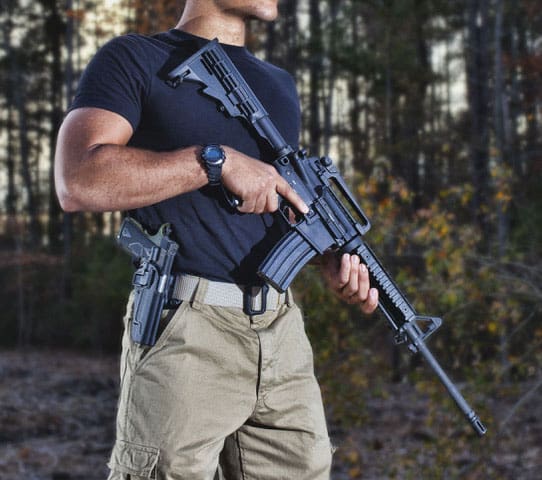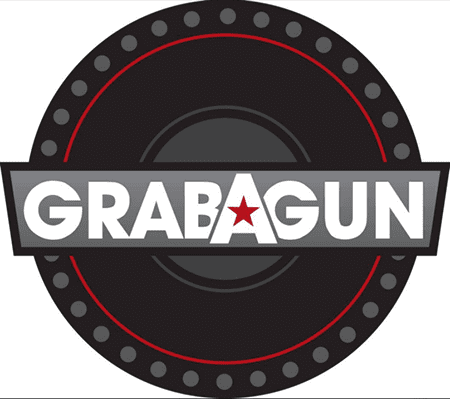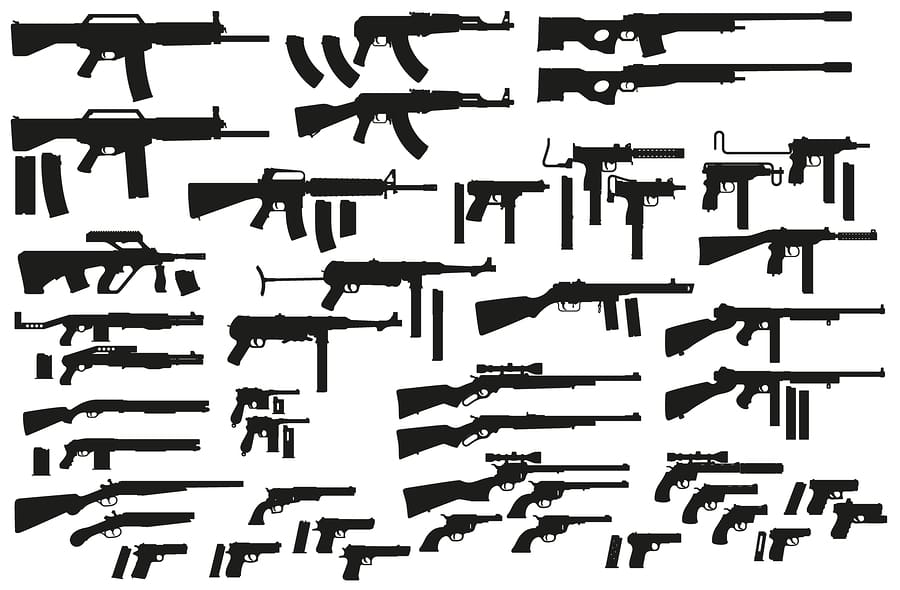(sponsored content)
Many people look at a modern sporting rifle and automatically assume it is an AR, but they may not understand what truly makes a real AR. A lot of manufacturers claim to make an elite product, but they are not held accountable for that. For those of you who take shooting and training seriously and want to purchase a high-quality firearm, you need to understand what to look for when you are evaluating a rifle.
Before you invest in one, let’s examine the design points that make up an AR or M-4, and which companies typically abide by industry standards. With a little knowledge, you can better understand what to look for when you purchase an AR-15.
There are several modern sporting rifle manufacturers, and you can typically see which one produced your weapon by examining the rail. If you are looking at a rifle you do not recognize, check there to see if you can identify the manufacturer. An even better way to analyze your weapon is by examining the particular components that make up the gun.

An extremely important part of the AR-15 is the Bolt Carrier Group. This is arguably the most vital component of the AR-15 uppers. The BCG consists of a carrier and a bolt gas key, as well as a few other components such as the cam, the firing pin, the firing pin retaining pin, the extractor, and the extractor pin.
The BCG is an important component because it performs a lot of the work for the rifle. It is responsible for feeding and extracting rounds–the basic action of the entire firearm. A true M-4 Bolt Carrier Group is heavier than the typical civilian versions on an AR-15.
The M-4 features steel that is even on both sides and on the ends; additional steel on the M-4 is not routed or hollowed out. These heavier BCGs are more reliable at feeding and reciprocating weight to force and extract deformed and uneven brass rounds through the chamber.
In addition, they handle dirty and sticky rounds better. Heavier bolt carriers’ increased “lock time” aids in extraction and feeding, reducing the felt recoil and reducing wear on internals, which are all positives for your weapon.
The larger portion of the bolt carrier is made out of steel and is a shrouded carrier. The firing pin should barely be visible and the interior should be chrome-lined. The outside of the BCG should be entirely parkerized.
The measurements for the AR-15 should be in accordance with original U.S. design, and the bolt should be made of Carpenter #158 Steel. The extractor should be made out of tool steel, and the pin that holds the extractor into the bolt made out of S2 tool steel. A mil-spec gas key that is heat-treated, hardened, and chrome-lined should be on the top.
Grade 8 fasteners should hold the gas key in place and be flush and properly staked–metal touching and impinging on heads. This is extremely important to keep the gas key from coming loose and initiating a misfire or malfunction of the weapon. If the gas key is loose it could render your rifle useless, so you will want to double-check your stacking marks and impinging parts.
Another aspect to note is whether your extractor insert is black or blue. High-quality extractor inserts are generally black. They will be magnetically particle inspected as well. This means the manufacturer will attach magnets to your rifle and sprinkle metal dust on it to find imperfections. Check for the “MP” to make sure that your rifle has been inspected for critical component damage during the manufacturing process.
Another important piece to examine before you purchase an AR-15 is the barrel. There are several identifying marks on a good AR barrel. You want to check for a “C” to determine if it is chrome-lined and to check again for the “MP” to make sure it was inspected with magnets for imperfections.
Additionally, you want to make sure that the barrel is made out of top-grade steel, generally a Chrome Moly Vanadium (CMV). Typically, these barrels are tested with an M197 round to verify that they can withstand high pressure. The MP testing is generally performed after this firing to confirm that the pressure did not create any flaws or cracks.
An important aspect to pay attention to in the manufacturing company is whether or not they perform batch testing. Not every manufacturer performs individual tests on all the rifles; some only run batch tests.
In this format, only about one out of every two hundred weapons is actually tested for accuracy and performance. It is important that your specific firearm is inspected before it leaves the factory, because you do not want to purchase one that has a flaw.
The third piece to examine on your AR is the barrel. The very bottom of every barrel should have two feed-ramps. Look for feed-ramps in a chrome-lined chamber and bore that are lowered and beveled. They should be smooth in order to allow rounds to easily ride up and out of the magazine and into the chrome-lined chamber.
On your front sight, you want to check for the “F” stamp to verify that it is the appropriate height for your rear sights. It also determines if it is compatible with any backup iron sights or additional sights you wish to incorporate onto your rifle. There should also be taper pins holding the front sights in place; this is a good indication of the quality of your front sights and that it is built to industry standard.

The AR-15 Lowers generally do not have as many aspects to evaluate. Most are made from a 7000-series Air Force grade aluminum. This is the standard mil-spec. The buffer tube is also standard–1.14” diameter receiver extension. There are two different diameters, and the 1.14” in mil-spec is stronger; the commercial version is not as sturdy.
Additionally, you want a buffer weight that is stamped with an “H” or an “H-2” on it. “H” is typical for most lengths and used for the AR-15. Furthermore, the Castle Nut is important to have properly staked to keep it from rotating out. A loose Castle Nut for non-staked lowers can potentially cause some issues with your rifle.
Those are some basic specs to look for when you are assessing which AR you want to purchase. Some major companies that generally adhere to these standards and specifications are Daniel Defense, Bravo, and Colt.
There are several others out there who follow these specifications too, so do your research on the manufacturing company of your next AR. If you need help purchasing your AR-15, check out Grab A Gun’s layaway program for gun financing!





Thanks
Im trying to justify getting a AR15 instead of a Hi Point 995. With a 20 round magazine now available for the Hi Point, that is looking very, very nice. Especially when I factor in the ammunition cost.
Just make sure that nowhere on the AR do you find the words SAINT, Springfield, or Rock River Arms. Other than that, you’re good to go now that Olympic Arms is in the ground, so to speak, where it should be.
I stopped buying from Grabagun last year when they decided that it was too much effort keeping up with Illinois’ ever changing laws regarding “assault weapons” and stopped selling “assault weapons” and “high capacity magazines” to those of us in Illinois.
Nevermind that our laws regarding “assault weapons” haven’t changed since July 2013, and that I (and many others in this state) have bought “assault weapons” and “high capacity magazines” from them many times between then and the time they decided to stop selling them to us.
Well, they’ve been good to me in CT. Lots of places (like Bud’s) won’t sell ANY semi-auto long gun to CT. Also, most places won’t pull non-compliant mags before shipping, by GaG will (so will Aim Surplus).
GaG is usually a couple of bucks more than Bud’s “cash” price, but the people and service is much better.
The one time they screwed up an order of mine, I called them and the sales rep moved heaven and earth to make it right.
See the same from CDNN and I’m in NJ. They wouldn’t even sell me night sights for my Windham because “NJ bans AR-15s” That’s news to me. I may not be able to get 30rd mags or a adjustable stock but I’ve got a very nice AR in front of me right now.
I had a old Olyimpic Arms Ultra Match that was a seriously sweet shooter.
Well, that makes one of you.
Amen brother.
I have owned both. Sold the Hi-Point after acquiring an AR.
The AR-15 is a rifle. The Hi-Point 995 is a pistol with a long barrel and a stock. Both can be fun to shoot. Whether for self-defense or shooting prairie dogs, the AR is a clearly superior choice.
Buy the best gun you can afford.
Chris lives in KY. Eastern KY is thick and hilly. Shots there are usually pretty close. Very close. Where my father lived in Carter County I doubt you could have seen a 100 yards in any direction from his front porch. If that.
If Chris is a hunter the AR is a much superior weapon to the Hi Point. But if he’s looking just for a light and handy self defense weapon the Hi Point has a lot going for it. And if the budget is tight the Hi Point has a clear advantage.
Is a .223/5.56 ethical for hunting? I thought the wound would be too small. It just seems a 30 caliber rifle would be faster killing. I’m a novice just asking questions.
IMHO the .223 is fine for animals in the under 100 pound range. You got big deer in your area. Especially since they switched from tobacco to soy beans on the farms.
I wouldn’t use the .223 on those whitetail.
I’m in southern Ohio right down on the river overlooking KY . In fact JWM, I’m only about 40 minutes from Carter County by car, and far closer by air. The terrain here is steep, deep, forested and brushy. Still, there are plenty of places that open up into several hundred yard shots, enough to give the AR a huge advantage over a PCC. I. Fact, while full on rifles may not get much call here, a carbine is almost purpose built for this area, and before MSRs, the 30-30 was king of these woods. I suppose an AR in 7.62×39 might be just the thing here: enough for the larger deer, not much unneeded extra.
Shot placement. 5.56/.223 has plenty of great hunting loads that will take out deer just fine. You just have to hit your target and any cartridge will fail to kill game or kill it quickly if not hit in a vital area. Heck, the biggest grizzly on record was taken with a .22.
Your call. One is ugly but lovable (by some).
Budget and mission should be your factors.
One thing the article did not mention is checking for all possible mall-ninja attachment points.
No mention of barrel twist rates or expanation of different trigger types. No mention of caliber variants or different length gas tubes or piston variants. Crap.
“Heavier bolt carriers’ increased “lock time” aids in extraction and feeding …”
The author clearly does not know the definition of “lock time,” which undermines his credibility and causes me to take the whole article with a grain of salt.
Yea, there is that.
And this error:
The very bottom of every barrel should have two feed-ramps. Look for feed-ramps in a chrome-lined chamber and bore that are lowered and beveled.
Perhaps the author is referring to the barrel extension, not the barrel; that’s where the feed ramps are. The feed ramps are, therefore, not in the chamber (regardless of whether the chamber/bore is chrome-lined).
I don’t have the time today to pick this apart and correct issues.
What is the definition of lock time? (Serious question)
The time between when you pull the trigger and the round ignites and leaves the barrel.
Think about it like this, you have a natural wobble. If the barrel is pointing exactly right when you pull the trigger, where is it going to be when the bullet leaves. Quicker lock time is (as far as I know) always better.
Google is your friend. Strike that. Google is dominated by statist anti-freedom types. I guess there’s Bing. Anyway:
https://en.wiktionary.org/wiki/lock_time
Lock time is influenced by such things as hammer weight, spring strength, etc. The various parts of the trigger group following the laws of physics. Generally speaking, a shorter lock time is preferred, since the act of pulling the trigger causes the gun to move and you want as little movement as possible before sending lead downrange.
ING: Lock time is the time between the round being fired and the bolt actually breaking its “lock” from the barrel extension, and coming out of battery.
Isaac: Quicker lock time is not always better. “Proper” lock time is always best of course. There has to be enough lock time present to keep the pressure in the barrel long enough to get gas up the tube and push the BCG back, and start it all over again. When you start changing barrel lengths, BCG weights, buffer weights, etc, the lock time can fluctuate a bit to get that perfect mix. Extremely fast lock time can actually lead to less bullet velocity, and possibly short stroking.
Hope this helps.
A heavy bolt carrier or buffer or higher strength spring will increase lock time. Dwell time is from gas port to exit.
Sorry, Bruce. You’re not helping.
Lock time starts the moment the sear releases the hammer (or striker) and ends when the firing pin hits the primer.
Lock time is applicable to any gun, with or without a bolt, single shot, semi-auto or otherwise (remember the term “lock, stock and barrel?”). And it has nothing to do with the release of the bolt on a semi-auto.
Sources here:
http://www.chuckhawks.com/locktime.htm
https://en.wiktionary.org/wiki/lock_time
https://thefiringline.com/forums/showthread.php?t=271466
https://www.merriam-webster.com/dictionary/lock%20time
https://www.youtube.com/watch?v=uC9CINaiGBw
http://www.popularmechanics.com/technology/gear/reviews/a211/1277311/
Hmmm, no. Lock time is the time from when the trigger/sear come apart, allowing the hammer/striker/etc to start moving and the moment of the firing pin/striker hitting the primer.
FWIW, most lock times are in the single-digit range of milliseconds (thousandths of a second). A very fast lock time will be under 2 ms (eg, the Anschuetz 1800 and 2000 rimfire target rifles), a Winchester Model 70 with the factory spring and firing pin will be about 3 ms. Older rifles like the Springfield ’03 and Mauser 98 (which Springfield copied) are in the range of about 5, maybe 6 ms. Rem 700’s will be in the 3 to 4 ms range.
A stock AR-15 with a stock trigger/hammer setup will have a lock time in the area of 15 to 16 ms. The big issue is the hammer. The bolt action rifles have much less mass they’re trying to accelerate with a spring than the AR’s hammer. If you wanted to get the lock time down on an AR, you could put in a lighter hammer and a heavier hammer spring. With work, I think you could get the AR’s lock time down to about half of the stock time – maybe 8 ms. You’ll NB that this is still slower than the slowest bolt action rifles out there…
Don’t refer to this as an article. Call it what it is: an ad
As ads go this one was better than most here in that it attempted to provide more information than simply “go to our website to buy this gun we think is great because we sell it!”
You bring up some good points on this article. I use young manufacturing bolt carrier groups ever since 91 when I was in Iraq. My father contacted Dan and bought our entire platoon bolt carrier groups because of the phosphate coated bolt carrier groups we’re not cycling ammunition correctly due to the sand getting into the oil we were using. He also included 20 cans of graphite key lubricant for locks and we started using that on their bolt carrier groups and it was amazing they actually worked they weren’t bolt-action rifles where you had to pull the charging handle after every round to get it to eject the spent brass and then Let It Slam forward to pick up the new round. The Chrome carriers that my father got from Daniel Young were impervious to the sand and wood slide across tit where the phosphate would actually cup and hold it and make the bolt not be able to slide against the aluminum receiver without digging in. I’ve been building AR-15 since 1985 and I have never had a receiver extension tube weather rifle or carbine length ever back out I always torque the castle nut or the rifle extension tube 2 35 foot pounds. Your torque specification for the barrel is 30 – 80 foot pounds of torque and you don’t have barrels falling off or coming undone Barrel nuts that is so the castle nut shouldn’t come loose under 35 foot pounds of torque either. Oh and young manufacturing doesn’t steak the gas key bolts he uses specific torque specifications that stretches the threads on the gas key screws so that they won’t back out along with a sealant that is mil-spec that hardly no one that makes bolt carrier groups uses any type of sealant they just lock them down and stake them. The problem with staking is you can actually fracture the bolt holding the gas key on if done improperly and cause it to loosen or share the head of the bolt ride off. It’s an old way of fastening things we have the proper sealants and torque measurements and tools to do that kind of work with we’re staking is obsolete.
Staking (not steaking) is done because ALL thread lock compounds break down from heat. I’ve never heard of one that doesn’t. What are you using?
4140 is a CMV steel, and I wouldn’t buy one ever. 4150 is another story. 416/410 stainless are also available for people who want a little more out of the accuracy. I also prefer nitrided barrels over chrome lining. My experience, they last a bit longer, and are generally cheaper.
No mention of gas lengths, CHF, or free floating. As long as your BCG, gas tube, and barrel are solid, you’ll be alright.
I’ve also seen comparisons of nitride vs. chrome-moly and the consensus seems to lean towards nitride barrels. Of course, what’s missing from this article is how badly crap ammo can screw up your AR no matter how good it is.
As they say, “Penny-wise, pound foolish.”
I’m amazed by the number of times I read a review of an expensive pistol (>$500) or rifle ($900) where the authors are crowing about how their gun “Ate up Tula or Wolf without a hiccup.” I’d rather run quality reloads for the same price as that dirty junk
Good to know Grabagun won’t sell me a MSR in Illinois. I guess I’ll get that Ruger AR 556 from Blythes/Griffith,IN. For 499! Good enough for me…
I’m waiting to see what happens when Illinois inevitably runs out of money and can’t borrow more. Even the Trib is floating the idea of carving up the state and attaching the bits to the neighboring states. As if the other states want that mess on their hands.
I’d be more worried about that than which websites won’t sell you a rifle.
What a special comment…I don’t worry about Illinois. I can move across the border with a modicum of effort. They can’t touch my SS cheque either.
If the effort required is so minimal then why not do it and kiss the problems of Illinois goodbye?
“I’m waiting to see what happens when Illinois inevitably runs out of money and can’t borrow more.”
There’s news in that dept, the state announced lottery winnings over 25 thousand may be ‘delayed’:
http://www.bnd.com/news/local/article158454399.html
Based on what’s happened in Illinois in the past few years, were I a betting man I’d wager the Special Session fails to produce a budget or a decent budget and that within the next couple weeks S&P downgrades Illinois bonds to junk status with that move quickly followed by Moody’s.
Illinois is tits up in 18-24 months and begging for a federal bailout.
No offense to the TTAGers in Illinois, this comment doesn’t include you, but the average intelligence of your Illinois voter would appear to be significantly less than room temperature.
It might be because I’m old or that I already have an AR-15 but I feel like reading this ad was a waste of time for me. I bought an affordable AR-15 from a brand name manufacturer and I’m happy with it. I figured if S&W made my handgun as good as they did, they probably have a good rifle in the M&P Sport II and a lot of people seem to agree.
Eugene Stoner intended the bolt carrier group not to exceed 40 ft per second in cycling of live ammunition. When the carbine model came out during the Vietnam war with 14 inch barrels and 16 inch barrels they had issues with over gassing because of the shortened gas tube from over 12 inches to a little over 7 inches in length. This caused the bolt carrier group to exceed 40 ft per second and caused it to bounce off the end of the receiver extension tube causing malfunctions and feeding and an extraction. If your AR carbine is having issues with over gassing you can just replace the buffer with a heavier buffer Spike’s Tactical makes one also Colt. The bolt carrier group can be replaced from an AR-15 to an M16 or a national match carrier to increase bolt weight and slow the bolt Carrier Group down by adding more mass more weight. Now there’s a point where you can actually cause the gun to stay in battery too long and that’s going to cause the guns rate of fire to slow down. Or Short Stroke failure to extract the spent cartridge casing or failure to push the bolt back far enough to pick up the new fresh casing out of the magazine.
“What to Look for When You Purchase an AR-15” . . . your next one. The whole thing is a very pleasant obsession.
: )
“…and you can typically see which one produced your weapon by examining the rail”
Hmmm. I seem to have a number made by Midwest Industries, Seekins, Geissele, and some weird-looking “M”.
Dammit, I got cheated.
Agreed. Can we change “rail” to “lower receiver” or “receiver”?
Was this written ten years ago? The weight difference between an M4 bcg and a semi is about 1/4 an once. This ad is making to much of a deal about the carriers being auto. Not enough info on the newer QPQ, nib or Np3. Not to mention 9310 steel instead of 158 carpenter. This ad does give people a base of info to start with when looking into an AR.
Don’t forget the California edition, “If you are looking for an AR15, on top of all the fees, taxes, registration, and other burdens, I mean safety measures, just don’t look for one. Unless you REALLY want one, then take the upper off and weld on a boat anchor directly under the magazine well, then reattach the upper, and presto, you have a CA legal AR15,…weight.
Gun control, it’s how you know the left cares……about anything but our rights.
It’s about to get even worse. July 01, over 10 round mags will land you in jail or prison. Jan 01 2018 the ammo (BAN) restrictions start. Wake up folks, Commie Kalifornia is much like an STD, infectious and spreads. Nothing, NOTHING to stop the death of FREEDOM and LIBERTY in this one party ruled cesspool.
One should never buy a AR, unless you grow a beard, wear tacti pants / shirts, para cord wrist band, and some kind of hat with a offensive saying on it. Oh, almost forgot a bug out back pack.
Lmao
Dude, you forgot the Oakley’s and the tats.
I mean, seriously. Get with the program here.
“The AR-15 Lowers generally do not have as many aspects to evaluate. Most are made from a 7000-series Air Force grade aluminum. This is the standard mil-spec.” but the one they feature the most at the top of their emails has a polymer lower(?)
LWRC. Buy once, cry once. Same can be said for LMT.
Also look for mid length gas systems as they are optimal.
Build your own and get your parts from reputable suppliers. That way YOU KNOW exactly what went into the gun, that it was assembled correctly (drink whiskey when done) and it’s the way you want it. You will also save a great deal of money. I don’t need it stamped with Daniel Defense or LWRC to know I have a top notch product. OK, some have BCM stamped on them… I didn’t know how to build them when I started but I read and had some friends who build so I watched them. Anyone can learn. It’s a lot of fun and I feel a great sense of satisfaction when I’m done. I know there has to be other builders out there, am I right?
I shoot all my AR/15’s great weapons even my Ranch rifles. all very dependable. Hi point have no experience. I have to say. I won’t replace any of them. Be safe out there.
Comments are closed.